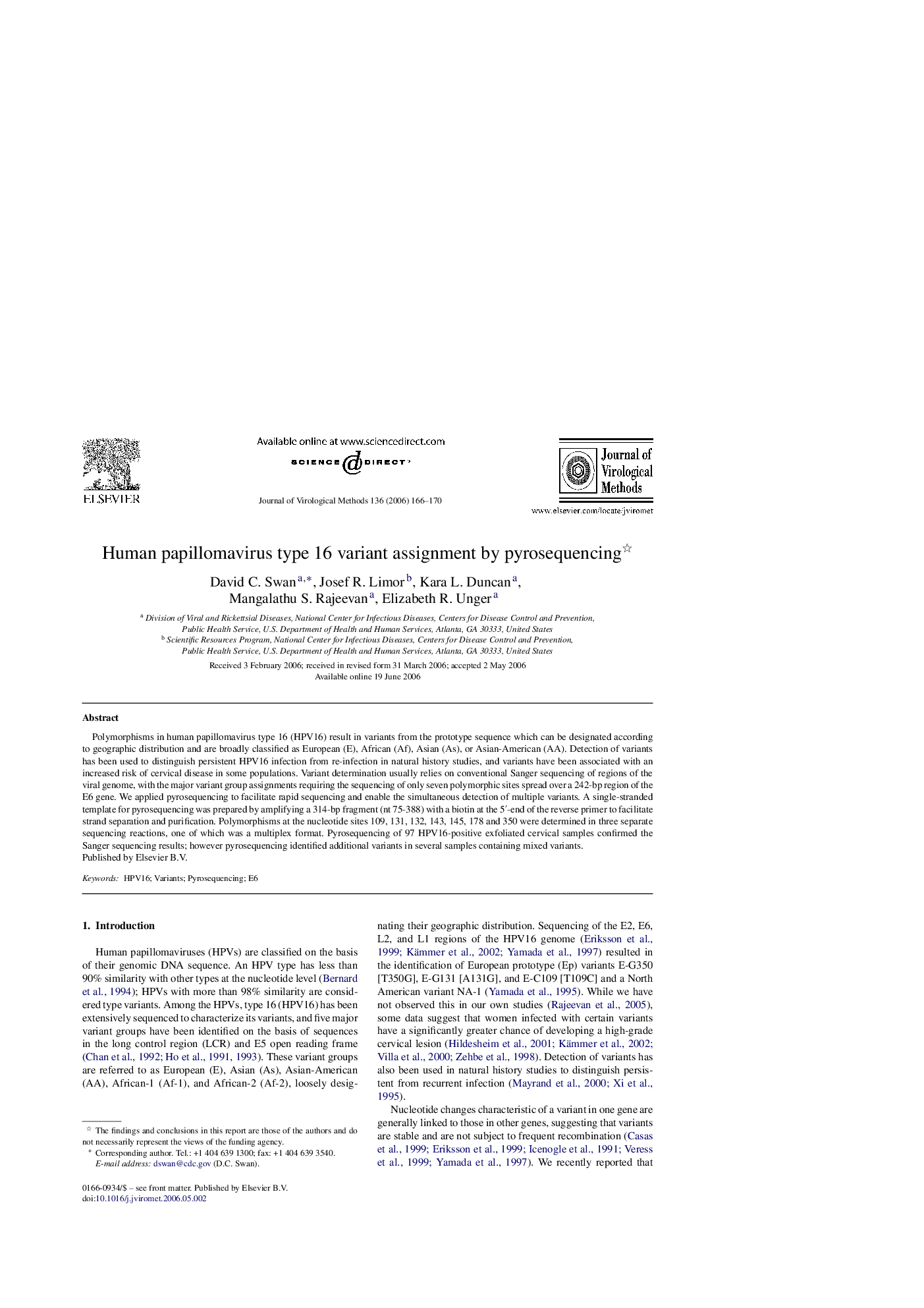| Article ID | Journal | Published Year | Pages | File Type |
|---|---|---|---|---|
| 3408544 | Journal of Virological Methods | 2006 | 5 Pages |
Polymorphisms in human papillomavirus type 16 (HPV16) result in variants from the prototype sequence which can be designated according to geographic distribution and are broadly classified as European (E), African (Af), Asian (As), or Asian-American (AA). Detection of variants has been used to distinguish persistent HPV16 infection from re-infection in natural history studies, and variants have been associated with an increased risk of cervical disease in some populations. Variant determination usually relies on conventional Sanger sequencing of regions of the viral genome, with the major variant group assignments requiring the sequencing of only seven polymorphic sites spread over a 242-bp region of the E6 gene. We applied pyrosequencing to facilitate rapid sequencing and enable the simultaneous detection of multiple variants. A single-stranded template for pyrosequencing was prepared by amplifying a 314-bp fragment (nt 75-388) with a biotin at the 5′-end of the reverse primer to facilitate strand separation and purification. Polymorphisms at the nucleotide sites 109, 131, 132, 143, 145, 178 and 350 were determined in three separate sequencing reactions, one of which was a multiplex format. Pyrosequencing of 97 HPV16-positive exfoliated cervical samples confirmed the Sanger sequencing results; however pyrosequencing identified additional variants in several samples containing mixed variants.
